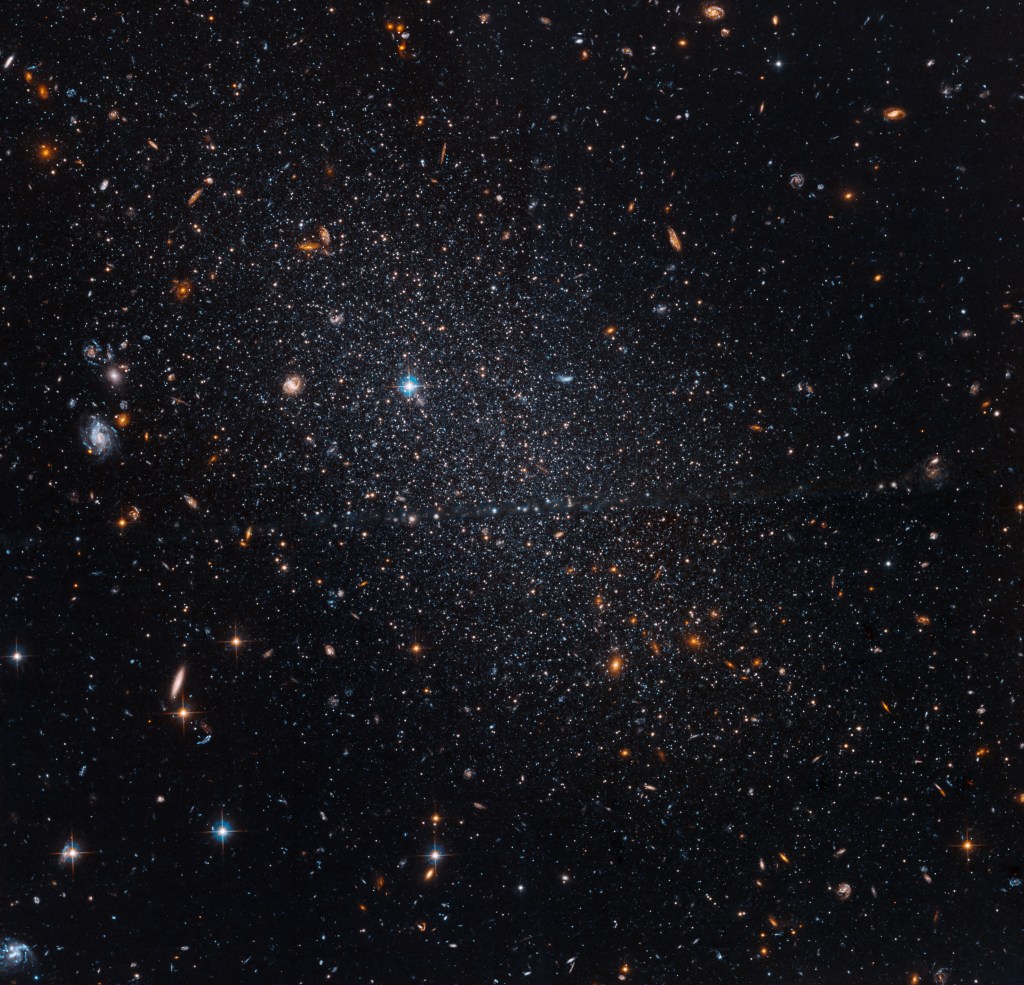—
The Unique Traits of the Tucana Dwarf Galaxy: Classification and Isolation
In the vast universe, galaxies come in various shapes and sizes, each with its distinct features. Among them, the Tucana Dwarf galaxy stands out for two main reasons: its classification as a dwarf spheroidal galaxy and its remarkable isolation. This article explores these unique characteristics, providing an informative and engaging look at the Tucana Dwarf galaxy for readers interested in astronomy.
Classification: What Makes the Tucana Dwarf Special?
Galaxies are broadly classified into several types, including spiral, elliptical, and irregular. However, the Tucana Dwarf belongs to a less common category known as dwarf spheroidal galaxies. These galaxies are significantly smaller and less luminous compared to their larger counterparts. Let’s break down what this means:
- Size and Luminosity: Dwarf spheroidal galaxies, as the name suggests, are diminutive in size. They contain fewer stars, which directly affects their brightness. The Tucana Dwarf, therefore, appears much dimmer than other galaxies, making it a challenge to observe with standard telescopes.
- Stellar Population: One of the defining characteristics of the Tucana Dwarf is its older stellar population. Unlike younger galaxies bustling with new star formations, the stars within the Tucana Dwarf are predominantly old. This gives the galaxy a more subdued glow, contributing to its overall dim appearance.
- Dust Content: Another notable feature is the scarcity of dust within the Tucana Dwarf. In many galaxies, dust plays a crucial role in star formation by providing the necessary materials for new stars to form. The lack of dust in the Tucana Dwarf indicates a low rate of new star formation, further supporting the observation that this galaxy is home to an older stellar population.
Isolation: A Lone Wanderer in the Cosmos
While its classification sets the Tucana Dwarf apart, its location in the universe adds another layer of intrigue. The Tucana Dwarf is situated approximately 3.6 million light-years away from the center of mass of the Local Group, a collection of galaxies that includes the Milky Way, Andromeda, and about 54 other smaller galaxies.
- Distance from the Milky Way: The Tucana Dwarf’s remote position is particularly fascinating because it is far from the gravitational influences of larger galaxies like the Milky Way. This isolation means that it has remained relatively undisturbed, offering a unique opportunity for astronomers to study a galaxy that has evolved independently.
- Galactic Neighbors: The Local Group is a gravitationally bound cluster of galaxies. Despite being part of this group, the Tucana Dwarf is one of only two dwarf spheroidal galaxies that are so remote. The other is the Cetus Dwarf. This extreme isolation has led astronomers to hypothesize about the reasons behind its current location.
The Andromeda Connection: A Galactic Encounter
Astronomers have theorized that the Tucana Dwarf’s isolation might be the result of a dramatic cosmic event. According to this theory, around 11 billion years ago, the Tucana Dwarf had a close encounter with Andromeda, one of the largest and most massive galaxies in the Local Group.
- Slingshot Effect: During this encounter, the gravitational forces exerted by Andromeda could have acted like a slingshot, propelling the Tucana Dwarf away from the denser regions of the Local Group and into its current, isolated position. This slingshot effect is a well-documented phenomenon in astronomy, where the gravitational pull of a massive object can significantly alter the trajectory of a smaller one.
- Implications for Galaxy Formation: Understanding these interactions helps astronomers piece together the history of galaxy formation and evolution. Studying the Tucana Dwarf in its isolated state provides valuable insights into the dynamics of galactic encounters and the forces that shape the universe.
Good to Know: Broader Implications and Reactions
The study of isolated dwarf galaxies like the Tucana Dwarf has broader implications for our understanding of the universe. Here are a few points to consider:
- Galactic Evolution: By examining isolated galaxies, astronomers can better understand how galaxies evolve over time without the influence of nearby massive galaxies. This can reveal the intrinsic properties of galaxies and the processes driving their evolution.
- Dark Matter Research: Dwarf spheroidal galaxies are also important in the study of dark matter. These galaxies have a high dark matter content relative to their visible matter. The isolation of the Tucana Dwarf makes it an excellent candidate for studying dark matter distribution and its effects on galaxy dynamics.
- Technological Advancements: Observing distant, dim objects like the Tucana Dwarf requires advanced telescopes and technology. The ongoing study of such galaxies drives innovation in astronomical instruments, benefiting the broader field of observational astronomy.
Conclusion
The Tucana Dwarf galaxy, with its unique classification and extreme isolation, offers a fascinating glimpse into the complexities of the universe. Its status as a dwarf spheroidal galaxy with an older stellar population and sparse dust content sets it apart from other galaxies. Meanwhile, its remote location provides a rare opportunity to study a galaxy that has evolved independently, potentially due to a close encounter with the Andromeda galaxy billions of years ago.
As astronomers continue to study the Tucana Dwarf, we can expect to learn more about the forces shaping galaxies and the universe at large. The insights gained from this research not only enhance our understanding of galactic evolution but also contribute to broader scientific knowledge, driving advancements in technology and deepening our appreciation of the cosmos.
For those interested in the wonders of the universe, the Tucana Dwarf serves as a reminder of the intricate and often surprising nature of celestial objects, each with its own unique story to tell.
For more Information, Refer to this article.


































